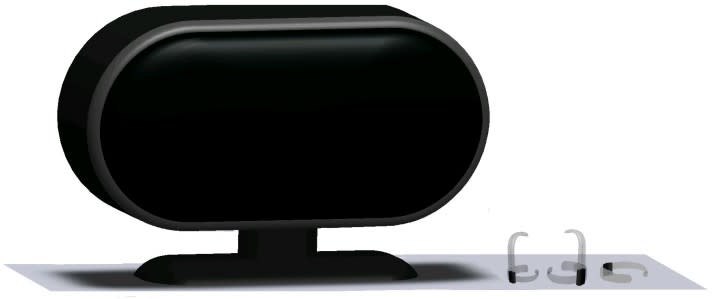Indian undergrads create a highly accurate gesture motion control device, but how does it compare to Leap Motion?
The age of computer mice and their pads might soon come to an end. With gesture-control enabled by devices like the Leap Motion and Xbox Kinect fast emerging, and touchscreens taking over just about everything else, the spot next to your keyboard might soon be empty.
Indian startup Intugine is getting in on the trend with Nimble, a gesture motion control device that uses a ring and sensor combination. That’s more hardware than what’s necessary with Leap Motion, which only requires the sensor and a human hand, but you can control Nimble from up to 15 feet (4.5 meters) away as opposed to three feet (~1 meter) that Leap Motion can manage.
Furthermore, Intugine’s Abhishek Sharma claims Nimble is far more accurate than Leap Motion and other competitors. That added range and accuracy opens up a whole range of applications. It supports multiple devices for gaming. It integrates specialized features to highlight, write, zoom and more for office presentations. And it seems like a perfect solution to control playback and volume while watching movies from the couch.
Finger on the pulse

The technology is being developed by a group of undergrad students at the Indian Institute of Technology, Kharagpur. They haven’t even graduated yet, but they’re already filing patents on their tech. Founder Harshit Srivastava explains:
To make our interaction more natural and intuitive with operating systems like Windows, we are developing another layer of interaction which consists of more physical interfaces like rotating knobs with fingers to change volume, pulling threads to pull your dashboard from above, make a cross to close any program, and flick your hand to switch between applications.
Besides computers, the team wants Nimble to work with smart TVs, home automation, and game consoles. Between now and the launch date, Intugine is working on making the ring even smaller, developing a Mac and Linux version, and creating more applications. Sharma says Intugine will also release Nimble’s SDK and developer units so that third-parties can pitch in.
Intugine has not raised any funds yet, but will do so as they begin manufacturing and preparing for international launch.
The device is currently available for pre-order for Rs 4,999 ($89), about $10 more than Leap Motion.
(Editing by Steven Millward)
The post Indian undergrads create a highly accurate gesture motion control device, but how does it compare to Leap Motion? appeared first on Tech in Asia.

 Yahoo Finance
Yahoo Finance 
